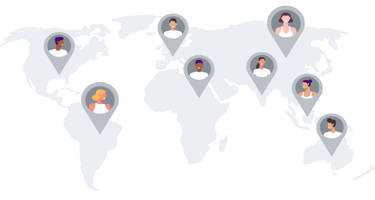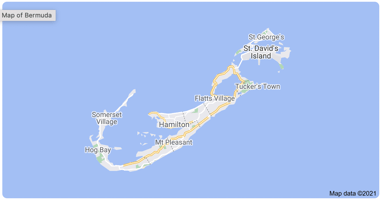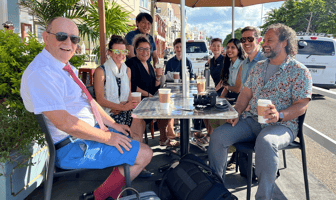In the first weeks of 2020, as the coronavirus began to rapidly spread around the world, some...
The Birth of WeHealth: Q&A with Joanna Masel and Sameer Halai
In June of 2020, the University of Arizona first announced that it would begin a pilot of the Covid Watch exposure notification (EN) app as part of a comprehensive strategy to help students successfully, and safely, return back to campus in the fall.
The app was swiftly launched campus-wide, with the intention to bring Covid Watch to the entire state of Arizona shortly thereafter if successful. A few short months later, the results were in — and they were impressive. With an estimated 12% reduction in R(t) (rate of transmission) and a 47% rate of adoption among those infected, it was clear that the university was on to something.
Fast forward to today, and that intention is not far from being realized. The massive collaborative effort between the university, WeHealth, and its partners has culminated into what will be one of the most comprehensive statewide deployments of EN technology in the US. And that matters — a lot.
While the results of the UofA pilot are promising, its impact lies in helping the state of Arizona establish itself as a pacesetter in the fight against COVID-19. If successful, the statewide launch of the Covid Watch Arizona app by WeHealth will serve as an exemplar of how to do it the right way. What is ‘the right way’, exactly?
We sat down with evolutionary biologist and professor at the University of Arizona, Joanna Masel, and the CEO of WeHealth, Sameer Halai to find out. Read on to learn more about the Covid Watch app and the unsung heroes that are redefining modern medicine.
_____________________________________________________________________________
First things first. Tell us a bit more about how you both got involved with WeHealth?
Joanna: When I first read about digital contact tracing, I was immediately intrigued and wanted to make sure the university had the technology. As a solution, it made a lot of sense given how fast contact tracing needs to happen in order to be effective against covid. A big team of volunteers at the university came together, and we eventually landed on Covid Watch because it was the most ready for deployment, with the most advanced design and code base.
What about you, Sameer?
Sameer: I had been doing start ups for a while and I had just stepped back from my last startup when I got involved with Covid Watch alongside hundreds of volunteers from all over the world. Unlike invasive digital contact tracing systems, we wanted an anonymous, decentralized, privacy-preserving solution to become the standard. By July the key technology aspects around decentralized, anonymous contact tracing were mostly solved due to the heroic efforts of many. The biggest gap then was the deep investment needed in the proverbial last mile. Implementation & support coupled with scientific expertise would be key. Joanna started to partner with us, and now she’s decided to stay on and keep working with us — which we’re thrilled about .
In order for something like this to work, it sounds like a lot of people need to use it. What’s been the biggest challenge so far?
Sameer: We made a hypothesis early on that for this technology to work, it needed adoption. For adoption, it needed trust. And for trust, it needed to be private and anonymous. None of us trust technology to be private any more. To install / enable something like this on my phone, I need to trust it.
So, the real challenge is privacy, not efficacy?
Sameer: They’re intrinsically linked. We’re looking for an Instagram or Snapchat level of adoption, but we are not Instagram or Snapchat. There’s no filters, no fun. We’re up against something impossible. For people to trust it, it has to be anonymous, decentralized and private. But what makes it private, is also what makes it harder to show efficacy. So if people don’t believe it works — and they don’t trust it — they’re not going to want to participate. And if they don’t participate, it doesn’t work. It can feel like a catch-22 situation.
Joanna: You could say that privacy and showing efficacy are competing priorities.
Interesting, can you explain?
Joanna: Often, you trade privacy for efficacy. The difference with the TCN protocol that Covid Watch designed, and which helped inspire the current Google/Apple system, is its decentralized architecture. This means that the data stays only on your phone. The only time any data even leaves your phone is when the user decides to share a positive test, or to share a very limited amount of anonymous data via opt-in analytics. We don’t collect your data and then tell you “how careful we’re being to protect it”. We just don’t collect it at all. This approach allows a huge increase in privacy in exchange for relatively little loss in ability to show efficacy.
Which begs the question: does it work? The readout from the University [of Arizona] pilot reports a 12% reduction in R(t). As a layperson, that doesn’t really sound like much…
Joanna: Actually, it is. That “12%” is the estimated number of infected people that should have received an exposure notification from the person who infected them. If they all quarantined in time to eliminate further spread, R(t) could have fallen by 12%. R(t) is often surprisingly close to 1. If we get it to switch from a bit above 1 to a bit below 1, that switches us from exponential growth to exponential decline, which is night and day. Another way of looking at it is in terms of how much we can reopen. If cases are currently steady, then this sort of app usage means you can start doing things again, like school reopenings, that would lead to 12% more transmissions.
Sameer: The way you have to think about it is that it’s 12% more than zero. The alternative of some people using it and it working, is that they don’t use it and it doesn’t work at all. The other important call out is that the result compounds. A 12% reduction in that transmission doesn't just mean that you have a reduction in that next wave of cases but every subsequent wave of cases, too.
Joanna: Right. There is also the issue of making sure that notifications go to the right people, and only to the right people. None of the other options out there are monitoring how often people who get notified are in fact actually infected. App usage metrics alone aren’t enough. That’s why giving users the ability to opt-in to anonymous data sharing is so important. It’s secure for you and helps us to truly understand “is this working?” and make it better.
That makes sense. So what now? What’s next for Arizona?
Joanna: The app will launch statewide, but it took us some time to get there. Scientific research pushes things forward, so the University was instrumental in making the case for choosing Covid Watch for Arizona. The State of Arizona insisted that before we launch, we find ways to issue secure codes as soon as somebody tests positive, rather than waiting for the data to trickle through pipelines that have created real delays in other states. That wasn’t so hard to do just for the university pilot, but took more time to put in place for the whole state. We are the first in the U.S. to launch with code delivery so far upstream, right at the point where patients learn that they tested positive. That will make a real difference in making sure that exposure notifications arrive in time to be useful.
With this launch, I’m sure a lot of eyes will be on Arizona. What do you want people to know?
Sameer: Our mission is to bring good solutions and good outcomes to the world as quickly as we can. We want to help the state of Arizona have an impact, and we also want to showcase best practices and learnings. WeHealth has created a superior platform, but it isn’t really a competition. We hope the launch is a catalyst for more conversations and even better outcomes everywhere else. Like Joanna said, science drives things forward. That’s what we’re trying to do here.
Joanna: Right. The pandemic has changed the way we all think about healthcare. It’s taught us that we didn’t really have the resiliency to deal with a public disaster of this magnitude. And stopping it is more about altruism than anything else.
Masks help you some, but others more. You don’t download the app for yourself. You’re downloading it to help others around you. The same is true for science: research brings advancement. And that advancement begets more research.
The Covid Watch Arizona app officially launches later this month. Check back soon for additional details.




